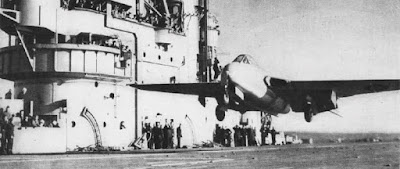How does a plane take off from an aircraft carrier?
Despite the fact that aircraft carriers are huge military ships, which act as floating airports, their runway is not long enough for an aircraft to take off normally. Extra' help is needed.
It is thanks to steam catapults that sophisticated modern aircraft can take off from an aircraft carrier.
Once in operation, the aircraft is placed in position and connected by the stern to a strong point on the deck, by means of a retainer or wire loop that has a weak section in the centre.
A pole near the front wheel of the landing gear lowers to fit a kind of shuttle that connects the plane to the catapult with a hook mechanism.
In front of the aircraft, but below deck, there are two parallel cylinders, not less than 45 meters long, which house two pistons fixed to the shuttle. The ship's boilers provide the steam that reaches the cylinders through a pressure accumulator, which varies according to the weight of the aircraft being launched.
When the catapult is triggered, the combined force of the engines and the pressurized steam breaks the weak section and the apparatus is released, reaching about 250 km per hour in a stretch of 45 meters.
At the end of the launch the plane is released from the shuttle. The probes on the front of the pistons end up in a water container, where they are submerged at rest. The shuttle is put back into position for the next launch: aircraft carriers can catapult one aircraft every two minutes; US carriers with 4 catapults can launch one aircraft every 30 seconds.
.
